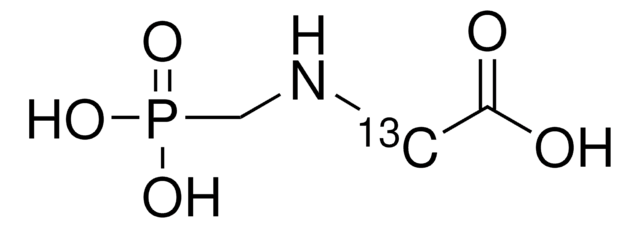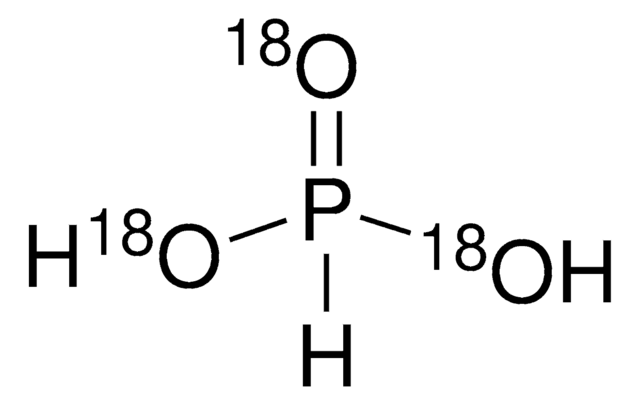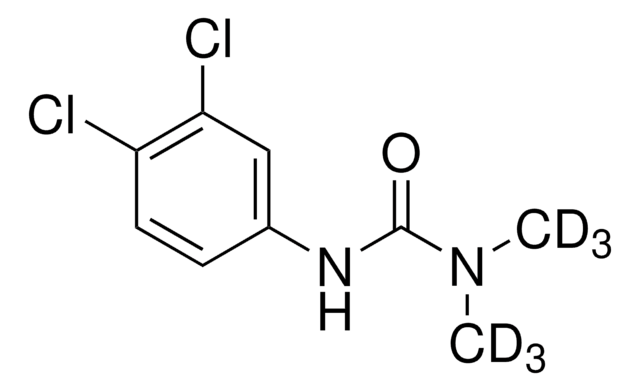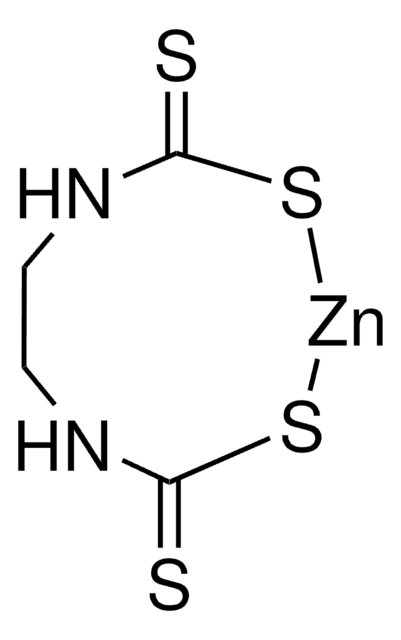90479
Glyphosate-2-13C,15N
PESTANAL®, analytical standard
About This Item
Produits recommandés
Qualité
analytical standard
Niveau de qualité
Gamme de produits
PESTANAL®
Pureté
≥99% (HPLC)
Durée de conservation
limited shelf life, expiry date on the label
Impuretés
≤0.5% water
Pf
230 °C (dec.) (lit.)
Application(s)
agriculture
environmental
Format
neat
Changement de masse
M+2
Chaîne SMILES
OC(=O)[13CH2][15NH]CP(O)(O)=O
InChI
1S/C3H8NO5P/c5-3(6)1-4-2-10(7,8)9/h4H,1-2H2,(H,5,6)(H2,7,8,9)/i1+1,4+1
Clé InChI
XDDAORKBJWWYJS-VFZPYAPFSA-N
Vous recherchez des produits similaires ? Visite Guide de comparaison des produits
Catégories apparentées
Description générale
Application
Remarque sur l'analyse
15N enrichment ≥98 atom% based upon labeld precursor
Informations légales
Mention d'avertissement
Danger
Mentions de danger
Conseils de prudence
Classification des risques
Acute Tox. 4 Dermal - Aquatic Chronic 2 - Eye Dam. 1
Code de la classe de stockage
11 - Combustible Solids
Classe de danger pour l'eau (WGK)
WGK 2
Point d'éclair (°F)
Not applicable
Point d'éclair (°C)
Not applicable
Faites votre choix parmi les versions les plus récentes :
Déjà en possession de ce produit ?
Retrouvez la documentation relative aux produits que vous avez récemment achetés dans la Bibliothèque de documents.
Les clients ont également consulté
Articles
Glyphosate and related compounds are measured in oatmeal and infant cereal using ion-exchange polymer-based particles for HPLC and SPE. Low level detection was obtained.
A simplified LC-MS/MS method to determine glyphosate and related compounds using a Supel™ Carbon LC U/HPLC column for stability under higher pH conditions and sufficient retention for the polar analytes in the presence of methanol as an extraction solvent.
Notre équipe de scientifiques dispose d'une expérience dans tous les secteurs de la recherche, notamment en sciences de la vie, science des matériaux, synthèse chimique, chromatographie, analyse et dans de nombreux autres domaines..
Contacter notre Service technique












